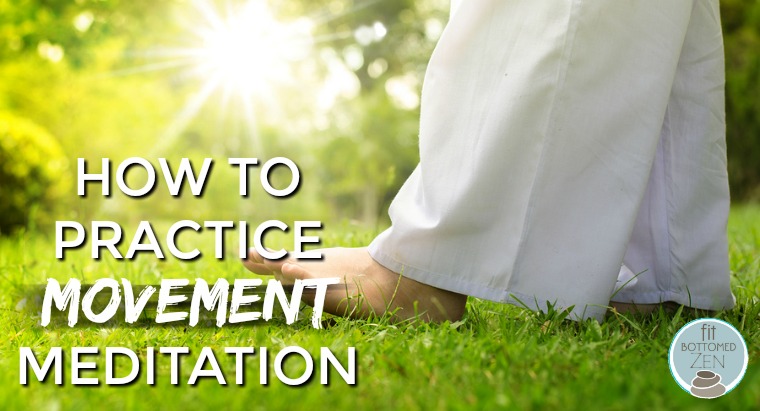How to Practice Movement Meditation

I bought the burgundy cushion, set up the deity infused altar, and set aside 10 minutes in my day — all in the hopes of achieving that elusive stillness of mind. You know, that thing you hear happens in day-long workshops or on retreat in India. But it didn’t work.
Instead, as I sat cross-legged on my new cushion, my focus went to each itch my body was experiencing. This snowballed into concern over a rash that reminded me of that time I spent six hours at the beach without any sunblock. Ultimately, I was left with the worry of having cancer. The seated meditation was a struggle. My brain was too busy to focus on something as monotonous as the breath. I needed another way to take control over my mind.
As a yogi, I was already familiar with the idea of linking my movement to breath. In every transition, I’d breathe out as I lowered down into chaturanga, inhaled into upward dog, and then took a nice, long exhale back into downward dog. I had never considered that this could be an actual form of meditation. Yoga was something I did on the mat to get flexible and strong. Meditation, I had always thought, had to be done seated with your hands resting gently in your lap. So when I went to Costa Rica and discovered Active Meditation — a dynamic way to practice — I felt like I had come home. Finally, a form of meditation that spoke my language … it moved!
What Is Movement Meditation?
Movement meditation, like seated meditation, boils down to presence. This is the intention: to be more present in your body, your surroundings, your life. But unlike seated meditation where you remain, well, seated, in movement meditation you keep moving. The stillness of the mind arrives through the movement from the body. So if you like to run, rather than just running mindlessly along the path, you would bring your awareness to each sensation that occurs while you are running. How do your feet feel as they hit the ground? What’s going on with your breath? Is it short and choppy? And as your awareness tunes into these sensations, your mind stops thinking about all the other stuff that it likes to think about. Your to-do list literally gets run out of your mind.
While running can be incredibly meditative, it’s not the only way. Dancing, walking, biking, even cleaning can become a movement meditation. You can do movement meditation in almost any activity, however, you want to have some level of competence in that activity. It could be hard to quiet the mind when you’re standing up on a surf board for the first time.
I like to dance as my form of movement meditation. It’s easy and fun to do. These dance parties of one take place whenever I feel like life is getting the best of me, and I need to get grounded in my mind and body.
Here’s How To Practice Movement Meditation
- Use the breath as your guide. While this may feel monotonous if you’re sitting, in movement, you are burning off extra energy, which makes following the breath easier to do. Your restlessness gets relief.
- Keep your attention on each movement. Playing around with the rhythm or speed can help you stay focused.
- Allow your body to move as it feels. This could mean going off script for a bit. If you’re in yoga, maybe you add in some extra poses, or on a jog you burst into spontaneous leaps. Listen to what your body wants to do.
- Lighten up. Try not to get bogged down by what’s the right way to move. Or question whether the meditation is working for you. Just go with the flow. You will feel a lightness emerge that carries a sense of clarity.
Have you ever tried movement meditation? What’s your favorite way to practice? —Elysha Lenkin
